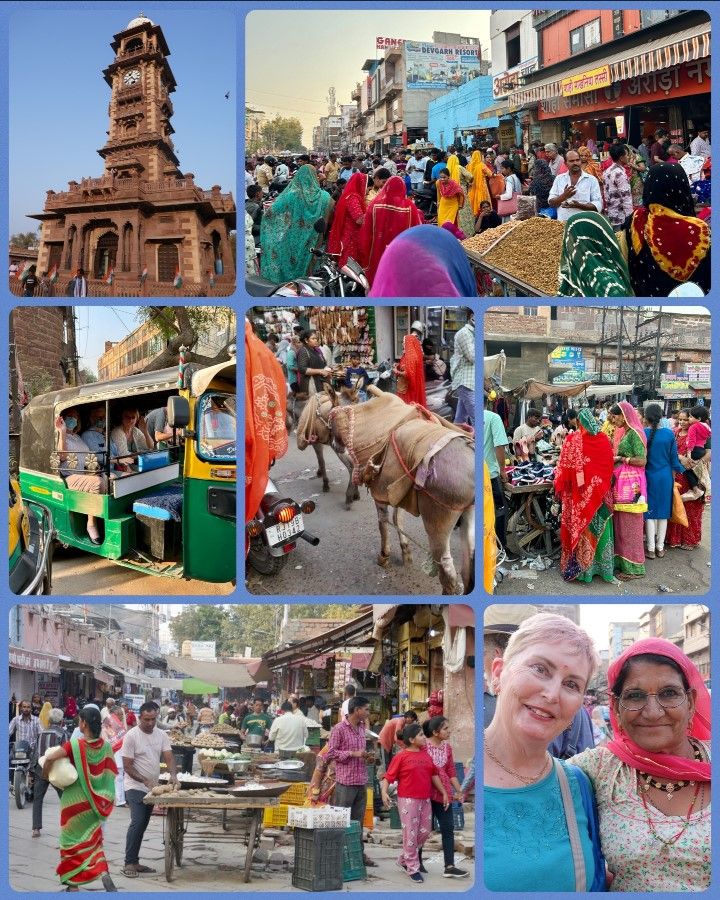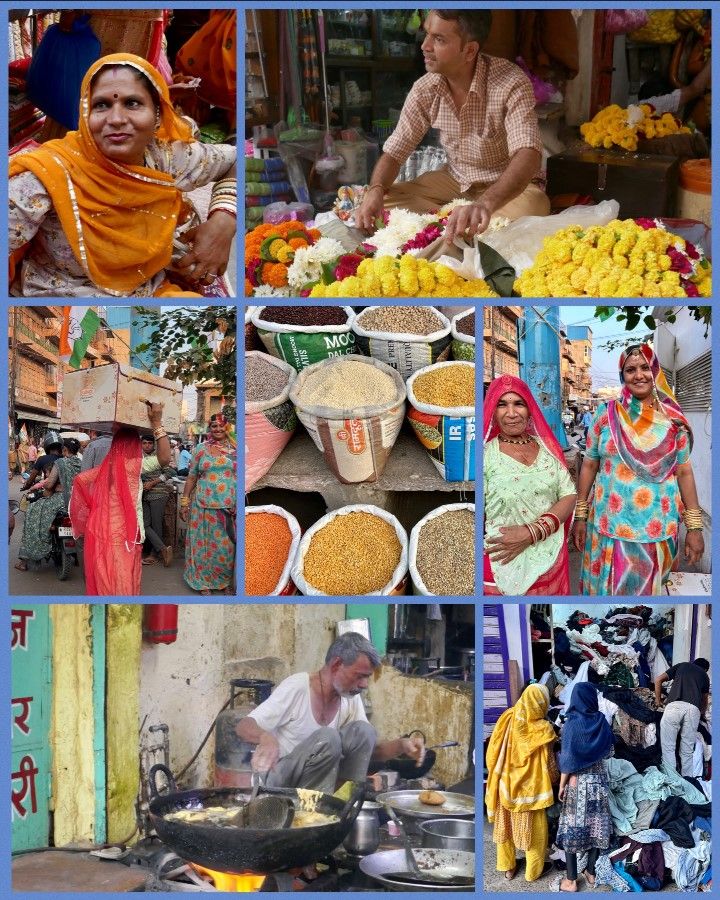Incredible India - The Blue City of Jodhpur

It was an early departure the next day, from the pink city of Jaipur - the streets eerily quiet, a long driving day to the blue city of Jodhpur. We shared the road with cows, overloaded trucks, passing a wetland and a myriad of roadside stalls, selling everything - from colourful rugs and marigolds to fruits and vegetables.

Jodhpur stands at the edge of the Thar desert and was the Citadel of the ancient Marwar Kingdom. This bustling desert city is the second largest in Rajasthan after Jaipur. It was founded by Rao Jodha, the leader of the Rathore clan in 1459.
A fun fact is that jodhpurs are named after the Maharajah of Jodhpur who invented a much more comfortable riding pant in the 19th century.
Blue cube like buildings snake up the hill to the impressive Mehrangarh Fort dominating the Jodhpur skyline - one of the most formidable structures in Rajasthan. The battlements rise up to 36 metres, merging into the rock face.
Why are the house painted blue? There are several theories:
- Brahmin society (India’s priestly caste) painted their houses blue in order to separate themselves from the lower-caste communities.
- As Jodhpur is a hot, arid city, another theory is it’s a cool colour to reflect summer heat.
- A 3rd theory - the blue is a mix of copper sulphate and limestone so it possibly repels insects such as mosquitoes and termites.

Much of the palace within the fort is now a museum - magnificent rooms extravagantly decorated surround courtyards with meticulously carved panels, latticed windows.
Unfortunately, I couldn’t manage the 4 flights of steps to see the sumptuously decorated rooms used by the Royal families of bygone eras. Below is a link to Sheesh Mahal's photography website which showcases a selection of photos.

I whiled my time in one of the courtyards, as shown below exploring the collection of elephant howdahs and Jodhpur’s royal palanquin collection - adorned with the finest silks and silver engravings; a beautiful ivory cosmetic chest and exquisitely carved ivory train set; another hall filled with miniature paintings, as well as Hindu idols.

Earlier in the day we visited Jaswant Thada - a milky white marble memorial in memory of Maharaja Jaswant Singh II - the translucent marble again exquisitely carved. A place for quiet contemplation and thankfully hardly anyone else around.

Our hotels have been lovely - not so in Jodhpur - lacking in maintenance, every room seemed to have a problem. Still there is always a silver lining in India - across the road a small Hindu shrine.
In the mornings we heard the tingling of bells and women quietly chanting, cows congregated waiting to be fed.
In the evening a wedding ceremony - the only male: the groom, amongst wafting incense and a kaleidoscope of colourful women singing traditional hymns, we were invited to share the festivities, a bindi applied to our foreheads - truly enchanting.

In the late afternoon we headed to the Clocktower Market - little did we know the excitement awaiting us.
We piled into tuk-tuks, the drivers giving us the ride of our lives, weaving into a congestion of cars, cows, carts, canines, people and tuk-tuks. Horn honking. Traffic jam? No problem! they simply veered into the oncoming traffic!
Even this madcap ride didn’t prepare us for the intensity on our senses as we joined the crush of humanity, sea of colour, aromas a mix of fragrant and foul, a cacophony of sounds - hardly a spare inch to squeeze along the narrow alleyways as everything imaginable is bought and sold.

The Clock Tower, built by Maharaja Sardar Singh (1880-1911) forms the centre of the oldest market of Jodhpur with over 7,000 match-box sized shops, selling vegetables, sweets, textiles, silver jewellery, books, bangles, antique items, and handicrafts; tie dye textiles, embroidered leather shoes, clay figurines, miniature camels and elephants, lacquerware, antiques, carpets, puppets, marble inlay work.
Donkeys, dogs and goats vied for space, men relieved themselves at the public urinals; we avoided cow dung and unmentionables on the uneven cobbled lanes as we jostled for space, protecting our possessions, all the while, cameras clicking and women urging us for photos with them.

This is where the locals do their shopping - a far cry from our orderly spacious supermarkets. One shop piled high with fabrics - every colour and texture - purchased by weight (bottom right image of collage above).
What an experience! An hour of exciting, exhausting, yet unforgettably fabulous sights, scents and sounds. A true taste of Incredible India!
We’ve been travelling through the state of Rajasthan, Land of Kings, visiting Jaipur, Jodhpur and soon Udaipur. This was home to the Rajput warrior clans who claim to originate from the sun and fire, and controlled this part of India for more than 1000 years. They forged marriages of convenience and temporary alliances, pride and independence paramount.
Much of their energy was spent squabbling among themselves, which gave the Mughals the opportunity to gain control. With the decline of the Mughals the Rajput’s clawed back their independence - at least until the British arrived.
Aligning with the British allowed them to continue as independent states, subject to certain political and economic constraints. However, this proved the beginning of the end as the Rajput maharajahs spent most of their time, travelling the world, living the good life.
After Independence the British allowed these Royal families to keep their titles and properties, being paid an annual stipend based on their status. This didn’t last either and in the 1970s, Indira Gandhi abolished the titles and stipends.
Many of these Royal families retain influence and wealth. Similar to the fort and palace in Jaipur, a museum trust was established for Mehrangarh, by the 36th Custodian of Jodhpur, Maharaja Gaj Singhji in 1972 to make the fort come alive for visitors, preserving the artistic and cultural history, as well as the collections of fine and applied arts.
In addition, the trust supports conservation and restoration and is a generous patron of the arts, music and academic study.
In a few days join me to learn about Jainism and visit one of their temples.
